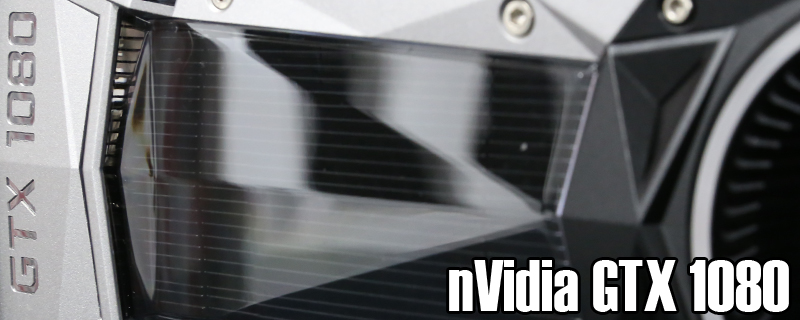Nvidia GTX1080 Founders Edition Review
Conclusion
In a word, breathless.
Normally a new GPU means a decent enough improvement over the previous generation, but not necessarily enough to be worthy of an upgrade if you have only just brought one. With the GTX 1080 it’s so mind-blowingly powerful that we think it’s worth buying unless you’ve got a pair of GTX 980 Tis sitting in your system.
The GTX 980 brought a few tricks to the party with Adaptive VSYNC and the excellent Dynamic Super Resolution. Both things that make a genuine difference to the smoothness and image quality of your gaming experience. The Pascal GPU at the heart of the GTX 1080 takes things that step further by introducing a host of technologies guaranteed to bring a smile to your face. We have Fast Sync, which promises all the high frame rates of having VSYNC off with none of the screen tearing that it introduces. GPU Boost 3.0 enhances the already excellent GPU Boost 2.0 by giving you full control over the voltage offset curve, enabling even higher clocks in situations where the GTX 1080 is twiddling its thumbs. We saw the benefits of this in our initial overclocking look, where the Pascal GPU broke the 2GHz barrier. High Dynamic Range is the latest quest from manufacturers to get us to purchase new displays, and it has a much greater chance of being adopted than 3D ever did. Higher definition and broader colour spectrums are what people demand, not things that require headwear.
Perhaps the biggest game-changer is Ansel. In a world where sharing your defining gaming moments with the world is something which has exploded, whether via the simplicity of Youtube and Twitch, or just cool screenshots on your forum of choice, Ansel frees you from the limitations of the developers camera to allow you to take a picture in any manner that you choose, and apply a whole raft of filters to it. You can automatically use the CUDA Cores to stitch together a giant flat image, or even stitch enough together to be viewable in a VR headset or utilising your smart phones virtual 3D image viewer. Although there are only a handful of games supporting this currently, it’s so breathtaking that we can’t wait to see it implemented in all of the popular games, and we’re even more excited to discover what the creative community can do with it.
Beyond the new features the obvious stand out is the sheer performance of the GTX 1080. The “new graphics card rule of thumb” that you skip a generation just doesn’t apply here. Even the cynical ‘they limited the performance for business reasons’ isn’t a valid point as the GTX 1080 is as fast as two GTX 980s. Two. It’s barely believable, and if we hadn’t got pages and pages of benchmarks which prove that very point we think we’d be somewhat cautious, or just assume it’s marketing speak. All of this mind-bending performance is delivered at a power draw lower than many mid-range offerings, and way below the range topping models. A GTX 980 SLI system draws 571W, whereas this, with equal performance and otherwise identical components, only draws 341W.
We’re not entirely sure how nVidia have managed to produce a GPU that so comprehensively renders all that has come before it, whilst not obsolete, at least on very shaky ground. This isn’t just nVidia trying to best a Radeon card, it’s trying to annihilate their own too, and with great success. Low power draw, high performance, insane overclocking capabilities and a ton of genuinely useful technologies, the nVidia GTX 1080 is a complete all-rounder and easily wins our OC3D Enthusiast Award.
You can discuss your thoughts on the Nvidia GTX1080 Review in the OC3D Forums.




